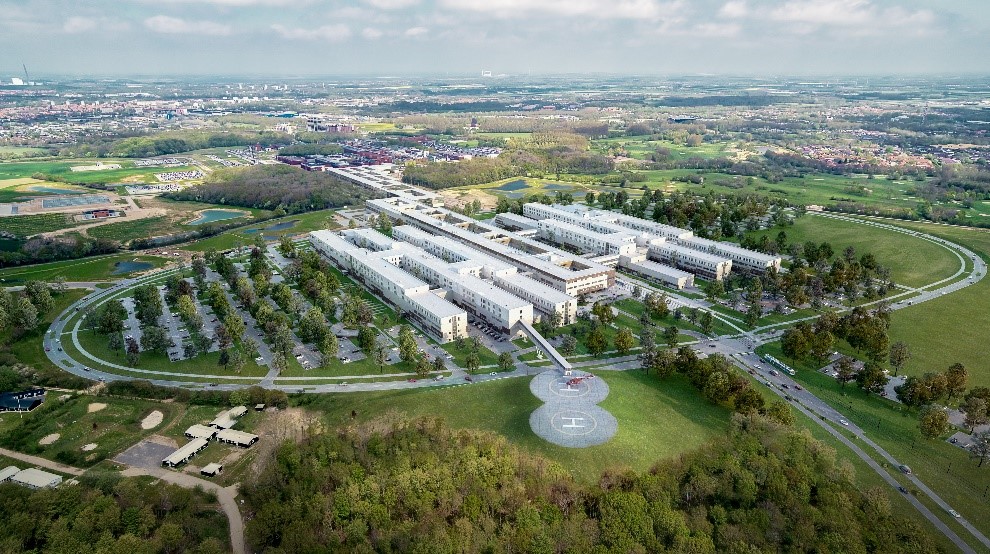AUTORE: Antonia Caponio
TUTORS: Alessandro Zichi e Danilo Mastrangeli
INTERNSHIP: OHPT, Join Venture tra CMB e Itinera
MASTER: Master in “BIM Manager” a.a 2019/20
Il presente lavoro di tesi nasce durante lo svolgimento del periodo di stage obbligatorio del Master in BIM Manager. Lo stage e, di seguito, l’impiego a tempo pieno nell’ufficio tecnico, come BIM coordinator assistant, del cantiere del Nuovo Ospedale Universitario di Odense in Danimarca, ha portato all’approfondimento delle tematiche di gestione del processo BIM, lato impresa di costruzione. Com’è noto, i paesi del Nord Europa più di tutti hanno, negli ultimi anni, investito enormemente nell’evoluzione tecnologica del settore delle costruzioni e dell’industria, credendo fortemente che il BIM possa dare un impulso notevole alla produttività ed alla redditività del settore. Come nei Paesi del Nord, anche in Italia, notevole negli ultimi anni è stato l’impatto che l’introduzione di questa nuova metodologia ha avuto trasversalmente su tutti i settori coinvolti, dagli studi di progettazione, alle imprese di costruzione fino all’industria del settore delle costruzioni. È parere comune quanto il BIM influenzati positivamente il processo di lavoro in fase operativa e manutentiva. In particolare si crede che crei valore in cantiere, garantisca collaborazione e cooperazione tra tutte le parti ed è necessario per creare un ambiente sostenibile. La Danimarca, in cui gli investimenti pubblici sono ingenti, nel 2013 ha reso obbligatorio l’utilizzo del BIM nei progetti nazionali, regionali, comunali. Tra questi progetti, rientra la costruzione del Nuovo Ospedale Universitario di Odense, il più grande della Danimarca, la una superficie di 260.000 m2 . La sfida che deriva dall’implementazione del BIM è la notevole quantità di dati da processare ed oltre 80 modelli Revit da coordinare tra di loro, oltre che l’intrinseca difficoltà tecnica della progettazione di una infrastruttura ospedaliera. Alla base c’è la stesura di processi chiari e ben definiti tra i vari soggetti, ovvero, il cliente ed i sub-appaltatori e di piattaforme semplici ed efficaci da utilizzare, al fine di creare un flusso informativo quando più celere possibile.
Il processo messo in atto, sia in fase di esecutivo che di costruttivo, ha i seguenti passaggi chiave:
- Definizione requisiti progettuali;
- Modellazione;
- Checking;
- Validazione;
- 4D-5D e Ufficio amministrativo;
- Approvazione del cliente
Al termine di questa procedura ci sono due possibilità: o il modello è validato e quindi è possibile fruirlo per gli altri BIM users, oppure, qualora non fosse validato, si ritorna alla fase di modellazione. L’ultima parte della tesi mostra gli strumenti utlizzati per organizzare le attività di validazioni e tenere traccia delle modifiche sul modello al fine di controllare l’avanzamento e la qualità della progettazione.
IMPLEMENTATION OF THE BIM PROCESS IN THE NEW UNIVERSITY HOSPITAL OF ODENSE (NYT OUH) COORDINATED BY THE CONSTRUCTION COMPANY
This thesis work was start thanks to the internship period of the Master in BIM Manager with OHPT, Join Venture between CMB and Itinera. The internship and then full-time employment in the technical office, as BIM coordinator assistant, of the construction site of the New University Hospital of Odense in Denmark led to an in-depth study of the management issues of the BIM process, on the construction company side. As is known, the countries of Northern Europe most of all have in recent years invested enormously in technological evolution in the construction and industry sectors, strongly believing that BIM can give a significant boost to the productivity and profitability of the sector. Like the countries of the North, Italy too, the impact that the introduction of this new methodology has had transversally on all the sectors involved has been significant in recent years; from design studios, to construction companies to the construction industry. It is common opinion how much BIM positively influences the work process in the operational and maintenance phase, in particular it is believed that it creates value on site, guarantees collaboration and cooperation between all parties and is necessary to create a sustainable environment. In Denmark, which sees huge public investments, in 2013 it made the use of BIM mandatory in national, regional, and municipal projects. These include the 260,000 m2 construction of the New University Hospital of Odense, the largest in Denmark. The challenge arising from the implementation of BIM is the considerable amount of data to be processed and over 80 Revit models to coordinate with each other, as well as the inherent technical difficulty of designing a hospital infrastructure. The basis is the drafting of clear and well-defined processes between the various parties, that is, the customer and sub-contractors and simple and effective platforms to use to create an information flow as quickly as possible. The process implemented both in the executive and in the constructive phase has the following key steps:
- Definition of design requirements;
- Modeling;
- Checking;
- Validation;
- 4D-5D and Administrative Office;
- Client approval
At the end of which there are two possibilities either the model is validated and therefore it is possible to use it for the other BIM uses, or you return to the modeling phase.
The last part of the thesis shows the tools used to organize the validation activities and keep track of changes on the model to control the progress and quality of the design.

